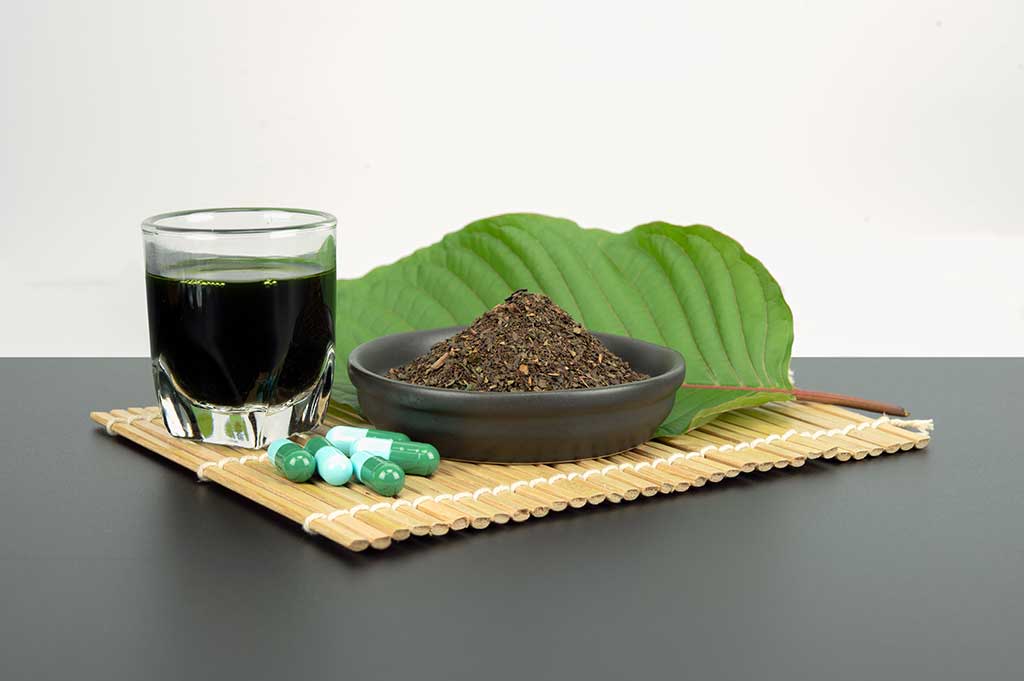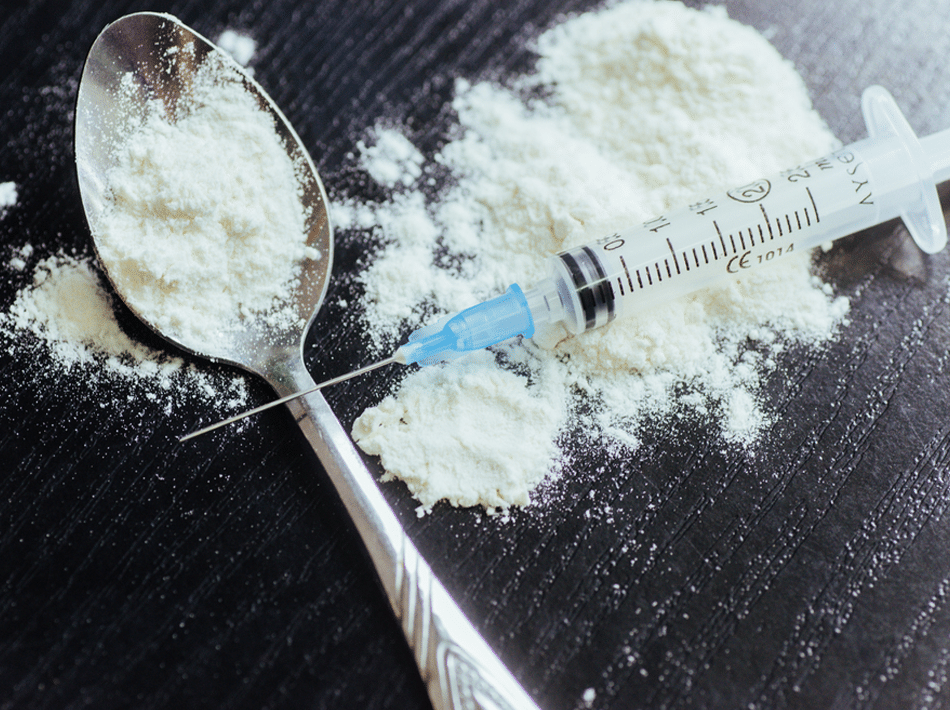To start the topic on Kratom it first needs to be mentioned that the quality of empirical research (meaning information written and published in peer-reviewed journals) is limited on this substance. Because of this, high-quality information is greatly limited, and more research is needed to fully understand Kratom.
With this being said, it is important to know that the dangers associated with Kratom are still being investigated scientifically. However, it is documented that there are considerable dangers associated with Kratom including physiological and psychological addiction, health concerns, long-lasting side effects, and even reported fatal overdoses. Many countries in the world have already made the use and/or possession of Kratom or any mitragynine substance illegal.
What is Kratom?
Kratom or Mitragyna Speciosa Korth is the name of a tropical tree of the Rubiaceae family which is native to Southeast Asia, Thailand, New Guinea, and the Philippines. The Kratom tree can reach heights around 50 feet tall with a spread of over 15 feet.
The Kratom tree is related to the Coffee Tree in the Rubiacae family. Most commonly in the history of Kratom, it has been used to make tea or is chewed. There is no reported date of the first usage of Kratom and it is speculated that it was decades if not centuries before 1836, which is the first time Kratom was documented in scientific literature.
Kratom has a long history in the countries of its origin and was first introduced to the United States in the early 1990s, but the use of Kratom was uncommon. The U.S. Food and Drug Administration (FDA) notes that the first known marketing of Kratom as a dietary supplement was on October 15, 1994.
The Poison Control Center received only 13 calls regarding Kratom in 2011 which rose to 682 calls in 2017. The latest available data reports 1,262 calls regarding Kratom to the Poison Control Center in 2020. To put this in perspective there were 1,450 calls about Lysergic Acid Diethylamide (LSD) and 546 about Phenylcyclohexylpiperidine (PCP) in 2020. This shows a growing trend concerning usage and problems associated with Kratom as it is reaching other more well-known drugs for concerned calls.
How is Kratom Processed and Consumed
Traditionally Kratom leaves were harvested and dried before consumption. At times, some may have chewed on fresh leaves from the tree. The leaves most commonly were used to make tea or used for chewing. On occasion, it has been reported that individuals may smoke the dried leaves of the Kratom tree. The average tree leaf will vary in size between 0.43 and 1.7 grams per leaf. It was typical that the average dosage was one to three leaves at a time.
As for those addicted to Kratom in Asia, it is reported that they use Kratom three to ten times a day. The reported effects of Kratom are short-lived and typically last at most one and a half hours.
In the United States, Kratom is manufactured from the leaves of the plant and put into a variety of delivery methods. These range from capsules of powder, powder to make beverages, mini shots of a liquid, gummies, and honey sticks. All of these vary greatly in intensity and as it is not monitored by the FDA there is no set standard for measurements of active ingredients. All the forms of Kratom available in the United States are processed forms and not of the raw leaves as traditionally used in the plant’s place of origin. That means most often the versions available in the United States are greatly more potent and may be mixed with other substances.
As mentioned earlier, it has been reported that the average dosage of Kratom was one to three leaves. Each leaf does vary in size and there are differences in potency based on the trees. The trees in Thailand often have potencies of mitragynine as up to 66% of the total alkaloids (remember that mitragynine is the substance causing the majority of the effects people desire from Kratom), with potencies as low as 12% of the total alkaloids in the Malaysian trees.
Other factors can affect potency such as the age of the tree, the environmental conditions it is in, and the time of the harvest. The European Monitoring Centre for Drugs and Drug Addiction reported that the dosage of Kratom used in Southeast Asia is typically 22.5 to 25 mg of mitragynine at a time.
Compare the 22.5 to 25 mg of mitragynine Kratom to what is more condensed in the United States you will see where some points of concern could arise. From some basic research online on Kratom sellers, there is a wide variety of concentrations, especially in the Kratom extract formulas.
A commonly found dosage is 250 mg per 5 ml bottle with some exceeding 375 mg of mitragynine per bottle. That shows the concentration versions available in the United States are at levels ten times or more than that of what was used in Southeast Asia. These bottles of concentrate also list a warning of no more than three doses in 24 hours.
The European Monitoring Centre of Drugs and Drug Addiction reported that no more than three doses of Kratom tea at 22.5 to 25 mg levels of mitragynine were needed to achieve the intended medicinal effects for individuals. Remember there are still no proven medicinal effects. What they were reporting was the desired medicinal effects of the individuals taking the medication. When you compare their levels of a maximum of 75 mg a day to what is being stated in the United States of 1,125 mg or more a day, you can easily see how problems can come about as this could be a great overconsumption and misuse of Kratom.
How Does Kratom Affect the Body?
The main psychoactive components in the leaves of the Kratom tree are the alkaloids mitragynine and 7-hydroxymitragynine. Both of these alkaloids are only found in the Kratom tree’s leaves. It has also been identified that speciociliatine, speciogynine, and paynantheine are also active substances in the Kratom leaves.
Currently, more research is being performed on the effects of Kratom on the body due to the increase in usage and misuse in other countries, such as the United States. Research as recent as three years ago is still on animal studies on the effects of this substance, such as how mitragynine can be turned into 7-hydroxymitragynine and the binding of the mu-opioid receptors in the brain. What does this mean? It means that more research is needed to know the exact effects of Kratom and that there are changes in the body and how the substance affects people, largely varying by dosage.
There currently are no official pharmacological uses for Kratom in the United States among many other countries. It is important to understand that there are two main schools of thought in medicine, Western Medicine and Traditional Chinese Medicine.
In Western Medicine, there is a lack of sufficient research on Kratom to know of any beneficial uses of the botanical drug, as well as a lack of research on side effects and negative consequences for its usage. One thing that is being noticed more in the United States is the abuse of Kratom is leading to dependency on the substance as well as overdoses. The Food and Drug Administration (FDA) has not approved Kratom for any medical purposes. Also, the Drug Enforcement Administration (DEA) has placed Kratom on its drugs of concern watch list.
The original use of the tree was by the laborers of the areas where the tree grows. They would dry the leaves and make tea with them to help combat the fatigue of their work, similar to a strong coffee, which coffee tree is from the same family of Rubiaceae trees.
In small doses, Kratom will produce simulant-like effects. These laborers would also chew the dried leaves at times providing some minor relief from muscular strains. Other century-old uses of the Kratom tree were to treat other medical conditions. One treatment was in Thailand, Kratom was used to treat morphine dependence.
In Malaya, they used Kratom as a substitute for opium. With the last two uses, it can easily be seen that Kratom in other doses has sedative effects like that of opiates. Others have used Kratom as a method to manage opioid withdrawal symptoms from chronic opioid use. Usage in the United States could be similar to the original usage in the tree’s home or origin. It is being noticed that many individuals are abusing the substance for the drug because of the effects it can produce.
Potential Risks and Side Effects of Kratom
Answering if any drug or substance is safe is never a simple yes or no answer. Many currently illegal substances started with actual medical purposes until the points of abuse caused changes in legislation on the legality of the substance, such as that with heroin. Often the changes in legality are due to advancements in the medical fields with newer compounds or substances that have less chance of dependence, decreased side effects, or any associated positive advancements with the newer replacement medication.
There are also times in which substances are made illegal solely on the harm that the substance causes the population due to the vast number of negative aspects associated with that substance. Lastly, which is controversial, some legalities of drugs may be fueled by other agendas and/or compensation by said parties involved. One such controversial drug regarding legality is cannabis.
Then to answer the question, is Kratom safe? The best answer is No, it is not a safe substance. As the author of this blog is not an expert on Kratom nor a leading medical researcher, this is an opinion based on research on the addictive nature of a substance that has led to fatal overdoses.
Currently, Kratom is legal in some of the United States, but it continues to grow in being outlawed for usage in many areas across the world. Kratom in small doses and infrequent use could be deemed safe, but the potential for abuse and even worse addiction is why it is this author’s opinion that Kratom is not a safe substance.
Food and Drug Administration (FDA) does not currently regulate Kratom and the research on the substance is still less robust than with many other substances. From information reported to poison control centers, there are multiple side effects associated with Kratom usage.
Kratom is also known to be both physically and psychologically addictive, which is a very concerning side effect. Even more concerning are the associated deaths reported with Kratom, which is the most severe negative consequence of any substance usage.
In many of the reported deaths, there were other medications or substances in the individual’s system. However, there have been overdoses reported in which Kratom is the only substance in the person’s system. This shows the potential danger of Kratom as a substance alone for fatal overdoses.
Side Effects Include:
- Tachycardia
- Drowsiness
- Nausea
- Agitation
- Irritability
- Constipation
- Loss of appetite
- Muscle soreness
- Runny nose
- Itching
- Hypertension
There are multiple noted adverse effects associated with Kratom usage. As previously mentioned, the physiological and psychological addiction to Kratom could also be viewed as an adverse effect. Some of the side effects from the withdrawal could fall into this category. Other adverse reactions can be all of those commonly associated with withdrawal seen with many opioids and opiates, despite Kratom not being an opioid or opiate.
Adverse Effects Include:
- Seizures
- Unintended weight loss
- Tremors
- Anorexia
- Insomnia
- Hallucinations
- Hostility
- Aggression
- Liver disease
Withdrawal Effects Include:
- Diarrhea
- Muscle aches
- Emotional Changes/Instability
- Fever
- Chills
- Aggression/Hostility
- Loss of appetite
Interactions with Medications
As there are lists of negative side effects and adverse effects associated with Kratom, there are also some reported drug interactions that need to be noted. Most of the reported drug interactions are related to Kratom’s Central Nervous System (CNS) depressant effects.
Kratom when used with barbiturates, opioids, opiates, alcohol, benzodiazepines, anxiolytics, antidepressants, and other CNS-active drugs can have both synergistic and additive effects. It is important to understand the difference between additive and synergistic effects.
Additive effects are rather simple. It is when the effects of two drugs combined are equal to the sum of the effects of each of the two drugs acting independently. This is more straightforward in figuring out how combining drug interactions will affect a person. It’s as simple as one plus one equals two.
Synergistic effects are when the combined effects of two or more drugs are greater than what would be predicted by adding their individual potencies, such as that with additive effects. The example here would be that one plus one equals three, four, five, or more. A major concern here is that when substances have synergistic effects it can lead to overdoses when abused, making this a concern with Kratom.
Currently, there is little known direct drug interactions with the active substances in Kratom. This mainly means that more research into this substance and potentially other drug interactions is required. It is known that Kratom can be attributed to CYP enzyme interactions.
Caution is advised if Kratom is used in combination with any other medication or drugs that are a substrate of CYP isoforms 3AF, 2C19, and 1A2. This is the extent to which current medical research has defined concerns of interactions. These interactions are still not fully understood due to the unknown routes of metabolism of the active substances in Kratom.
Regulatory Status of Kratom
The regulatory status of Kratom is constantly changing. Therefore, the provided information is only accurate at the time this blog is being written as laws in the United States and other countries could and some will change. If you are curious as to the current legality of Kratom in your area, you can conduct research to see the current laws regarding this drug in your local areas.
In the United States, there is a great deal of varying laws around Kratom. At the Federal level, the substance is still not illegal, but the Drug Enforcement Administration (DEA) has listed Kratom as a drug and chemical of concern.
To start the current state of the legality of Kratom let’s look internationally. This is not a fully comprehensive list as in some countries in areas such as Africa is harder to find definitive laws regarding Kratom and the legality could vary from city to city in those countries.
There are at least 28 known countries that have made Kratom completely illegal including use and possession of the drug. Many countries make it illegal due to the psychoactive properties of the drug, the potential for abuse, and the high likelihood of addiction to the substance. Countries such as China also have varying laws, such as Kratom is banned and completely illegal in Hong Kong. Most of Europe and Southeast Asia have made Kratom illegal.
Kratom is legal in Thailand, a main producer of the drug, but was only brought back to being legal in 2021. This change to the legality of this drug was largely due to the long-standing cultural tradition in Thai culture for the use of Kratom tea. The doses typically used historically in Thailand and other countries are greatly less than that seen in concentration produced for Western countries such as the United States.
When it comes to North America there are many variations on the legality of Kratom. Currently, the substance is legal in Mexico and essentially legal in Canada. However, in Canada, as it is “legal” it is not considered safe for human or animal consumption. The law in Canada is that Kratom is not criminally prohibited for personal use and possession. However, the sale, distribution, and other activities involving Kratom are illegal in Canada, placing this legality in a unique position in this country. When it comes to legality in the United States there are vast differences depending on the state and region.
Overall, Kratom is not illegal at the Federal level in the United States. However, states and regions can have differing laws and ordinances around Kratom. At the current time, Kratom is outlawed completely in the states of Alabama, Arkansas, Indiana, Rhode Island, Vermont, and Wisconsin. Rhode Island is reviewing the proposed Kratom Consumer Protection Act (KCPA) and may reverse the outlaw of the substance shortly.
Other states have regions that have banned the use of Kratom such as California where the region of San Diego has a complete ban of Kratom. Other states with region-specific ordinances are Colorado, Florida, Illinois, and Mississippi. New Hampshire has made it illegal for use for anyone under the age of 18 and the states of Oregon and Tennessee have the age limit set at 21.
The Kratom Consumer Protection Act (KCPA) has been passed in the states of Georgia, Nevada, Oklahoma, and Utah. The KCPA states the purpose of the bill is to ensure that individuals can legally and safely enjoy the use of Kratom. The following is all the opinion of the author of this blog and will pose questions that you should investigate and answer yourself when looking at things such as legality and the KCPA.
How can a substance with unknown pharmacological effects be safely consumed? If a substance is known to cause fatal overdoses, cause physiological and psychological addiction, and have a list of negative effects, should it continue to be unregulated by the FDA and sold to consumers at stores such as gas stations and vape stores? Should laws be set forth to protect public safety while more research on the substance is performed?
If you or someone you know has become addicted to Kratom and would like assistance with recovery from this addiction, please call Milestones Wellness Centers or complete the online form on this website and we will assist you in starting your recovery.





